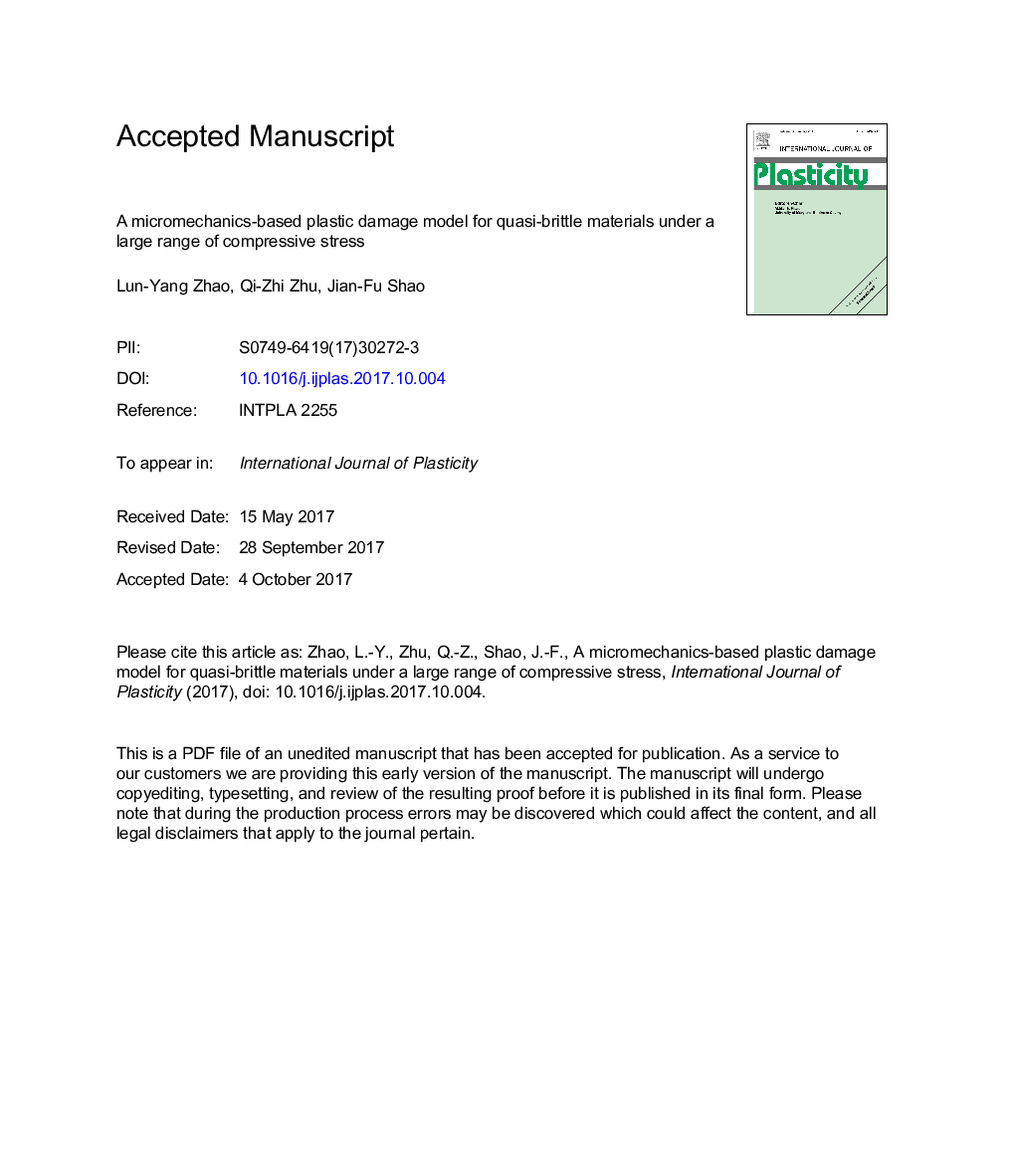| Article ID | Journal | Published Year | Pages | File Type |
|---|---|---|---|---|
| 7174877 | International Journal of Plasticity | 2018 | 36 Pages |
Abstract
In this paper, a new micro-mechanics based plastic damage model is proposed for quasi-brittle materials under a large range of compressive stress. The damage is due to initiation and propagation of micro-cracks while the plastic deformation is directly related to frictional sliding along micro-cracks. The two dissipation processes are then physically coupled. With the Mori-Tanaka homogenization procedure and thermodynamics framework, the macroscopic state equations are deduced and the local driving forces of damage and plasticity are defined. New specific criteria are proposed for the description of damage evolution and plastic flow. These criteria take into account the variation of material resistance to damage with confining pressure and the degradation of surface asperity of micro-cracks during the frictional sliding. An analytical analysis of macroscopic peak strength and volumetric compressibility-dilatancy transition is provided. A specific calibration procedure is further proposed for the determination of all model's parameters from conventional triaxial compression tests. The efficiency of the proposed model is verified against experimental data on three different materials and for a very large range of stress. All main features of mechanical behaviors of materials are well captured by the proposed model.
Related Topics
Physical Sciences and Engineering
Engineering
Mechanical Engineering
Authors
Lun-Yang Zhao, Qi-Zhi Zhu, Jian-Fu Shao,
